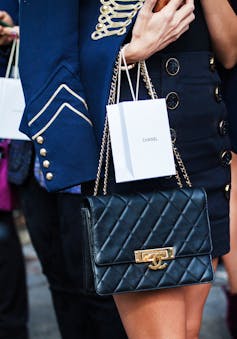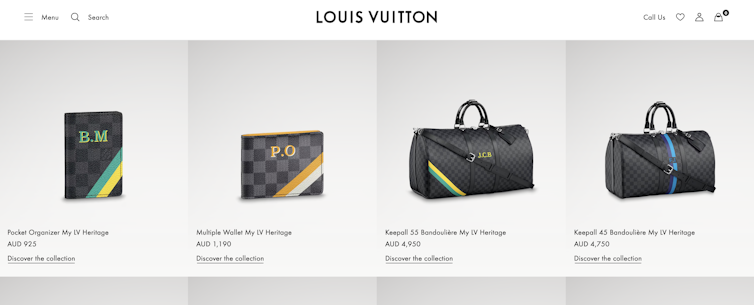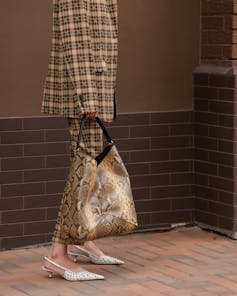Wednesday, 21 May 2025
Monday, 19 May 2025
Stuck in a Creativity Slump at Work? Here are Some Surprising Ways to Get Your Spark Back
By Poornika Ananth, University of Bath
The latest entry in the Marvel Cinematic Universe’s movie slate, Captain America: Brave New World, arrived earlier this year with the hopes of continuing the legacy of the beloved sub-franchise. But the film struggled to hit the heights of the three earlier instalments. Critics hit out at its messy plot, unremarkable characters, tired visuals – and an overall absence of creativity.
This raises an interesting and broader question about creativity at work. Most advice on this focuses on having one creative idea. But what does it take to stay creative over time? After all, creativity at work isn’t just about having great ideas – it’s about having them consistently.
Yet over time, even the most innovative minds and organisations like the Marvel Cinematic Universe can hit a creative slump that they struggle to recover from.
Long-term creativity is often hindered by two broad factors. The first is the “expertise trap”. Expertise can initially be great for creativity. After all, as a person develops greater knowledge and skills, they can combine different elements of that knowledge to develop unique ideas and solutions to problems.
Over time however, expertise can actually limit flexibility and creativity. When people become exceptionally skilled or knowledgeable in a particular field, they tend to experience “cognitive entrenchment”, a fixation where deeply ingrained knowledge of a topic leads to rigid ways of thinking.
This might work well in familiar situations, but it can also make it harder for people to see things in a new light.
The second factor is the “success trap”. Research suggests that success – and receiving recognition for a creative idea or outcome – can affect creativity in unexpected ways.
Creative success can motivate people to come up with more ideas, increasing the quantity and pace of their output. But on the other hand, it can also encourage creators to focus on the things that worked well in the past. They often try to replicate or tweak them instead of coming up with something genuinely new.
Of course all is not lost. There are inspiring examples of people and organisations who break out of a creative slump. Taylor Swift faced being pigeonholed after her initial country-pop success, but came back even stronger with her shift to synth-pop in 2014.

And Danish firm LEGO, which was on the brink of bankruptcy in 2003, regained its supremacy in the toy sector by coming up with new ways of making their core products – LEGO bricks – popular again. This even included taking the creative leap into movies based on their bricks.
Get your creative spark back
Research indicates that if you want to be consistently creative, it is important to break away from the things that helped you achieve creative success in the past.
This can mean moving away from familiar environments as your career advances. Or it could be adding to your knowledge sources so that you are not merely reliant on the depth of your knowledge but also on the breadth. You may also benefit from collaborating with people who already have that additional knowledge so you can combine your brainpower.
Second, if you have had a recent success this can often come with expectations to replicate it and chase more opportunities. While this may have some short-term benefits, in the long run insulating yourself from those expectations – and the rapid increase in opportunities – can give you the time and space to come up with new ideas instead of retreading old ground.
My own research suggests that sustaining creativity over time is not just about generating ideas repeatedly, it is also about managing a portfolio of developing ideas. This is a better approach than merely focusing on one central idea.
It involves putting aside (or stockpiling) ideas that have limited use or value right now and turning your attention to other ideas in the portfolio. Stockpiled ideas can exist and develop in the background, but you can return to them in the future and use them flexibly to learn from, seek inspiration or develop new projects.
For people who work in the knowledge economy, ideas can be their primary currency. But beyond that, creativity can also improve wellbeing and so is a fundamental part of being human. By following these tips to reignite your creative spark, you can reap those benefits of continued creativity over a long period of time.![]()
Poornika Ananth, Assistant Professor in Strategy and Organisations, School of Management, University of Bath
Subscribe to support our independent and original journalism, photography, artwork and film.
Saturday, 17 May 2025
Personalising a Luxury Fashion Item with a Name or Initial? Research Suggests a Hidden Social Cost
By Anne-maree O'Rourke
You might think spending $5,000 on a handbag or wallet would be prestigious and exclusive enough. What about taking things one step further – and personalising it with your own name? Brands including Gucci, Louis Vuitton and Dior now offer extensive customisation options – some for a few products, others for their entire range. Names and initials are an obvious, popular choice.
Some have hailed personalisation as the future of luxury goods. But it’s worth asking – could there be any downsides?
Research has shown there’s a trade-off to signalling social status with luxury goods. Luxury consumers are often perceived as less warm and friendly, more concerned with managing their image.
Our recent research examined whether name-stamping could increase this social cost. Our findings suggest for some customers, it can – increasing their fears of being negatively judged.
One-of-a kind products
These personalised touches are marketed as unique, one-of-a-kind products. They’re designed to appeal to a desire for individuality and exclusivity.
For luxury buyers, customisation offers a way to showcase their personality, passions and interests. It can enhance their feelings of connection to a brand and sense of psychological ownership of an item.
Enabling consumers to co-design a product can also help alleviate the impostor syndrome some consumers experience when buying high-end luxury items.
For the brands themselves, personalisation services can increase profit margins, improve market appeal and strengthen customer loyalty.
Much of this trend has been fuelled by millennial and Gen-Z luxury consumers, who are increasingly seeking out unique, tailor-made experiences.

By 2030, it’s expected that millennials and Gen-Z will account for 60–70% of all luxury purchases.
A 2017 survey found more than half of millennials who’d recently made a luxury purchase were willing to pay more for personalised luxury goods.
We love our own names
The popularity of name-stamping, in particular, may come down to a concept called “implicit egotism”.
Research suggests most people have a subconscious positive association with themselves. This extends to a preference for things that are connected to their sense of identity – such as the letters of their own name.
The drawbacks of personalisation are less widely discussed. One clear one is its impact on resale value. Personalised items are harder to sell.
This is particularly relevant for Australia’s booming second-hand luxury market, driven by younger consumers prioritising sustainability and affordability.
Research also suggests that excessive customisation – letting customers make design decisions on custom colours, fabrics, and so on – can decrease the signalling value of luxury items and undermine their status appeal.

Luxury’s social cost
Then there’s the cost that can come with luxury itself.
Research has shown luxury consumers can be perceived as less warm and friendly than those who forgo luxury.
Interestingly, this perception isn’t driven by envy. Rather, it stems from a belief that luxury wearers are actively managing their image to impress others.
Does name-stamping luxury increase this social cost even more? Our research, with co-authors Joanna Lin, Billy Sung and Felix Septianto, suggests the answer is yes.

We conducted four studies with 1,354 female luxury and non-luxury shoppers from the United States.
We found consumers who personalise luxury items with their name worry more about being negatively judged than those who purchase non-customised items.
This effect was consistent, regardless of whether the personalisation featured initials or full first names.
The overtness of name personalisation, in particular, may explain the added social cost. Customising a bag with a non-standard colour might only catch the eye of a luxury brand enthusiast. A prominently displayed name, however, unmistakably signals customisation to everyone.
Not all fear judgement
Importantly, we found not all luxury consumers share this fear of judgement equally. The impact depends on individual motivations for purchasing luxury items to begin with.
Those who are motivated to consume luxury goods for social reasons, such as standing out, are less concerned about receiving negative judgement from others.

In contrast, those who are motivated to buy luxury items for more individual reasons are more wary of how name personalisation might be judged.
For this group, which made up about half of the consumers we sampled, subtle, customised touches could be a more appealing option.
There could also be some variation across different cultures.
A report by KPMG found Chinese consumers – a group not included in our study – often seek luxury consumption as a means of social advancement and self-differentiation, meaning they are likely less concerned about the social costs.
On the other hand, we could speculate that Australian consumers, influenced by the “tall poppy syndrome” cultural phenomenon, may be even more sensitive.![]()
Anne-maree O'Rourke, Lecturer in Marketing, The University of Queensland
Subscribe to support our independent and original journalism, photography, artwork and film.








































































